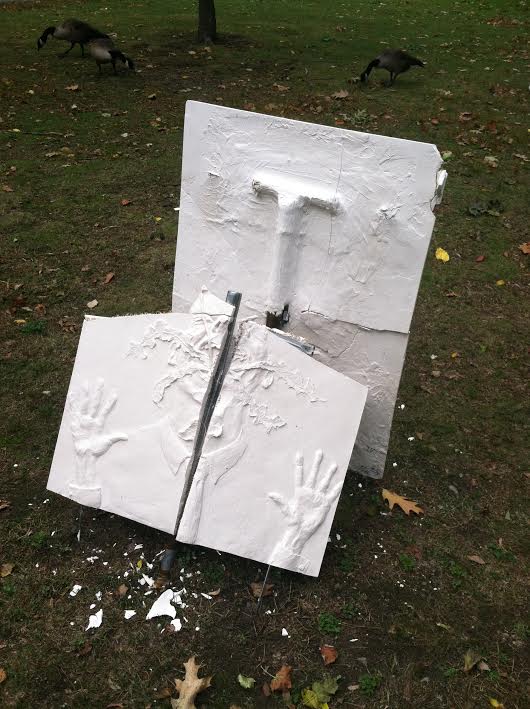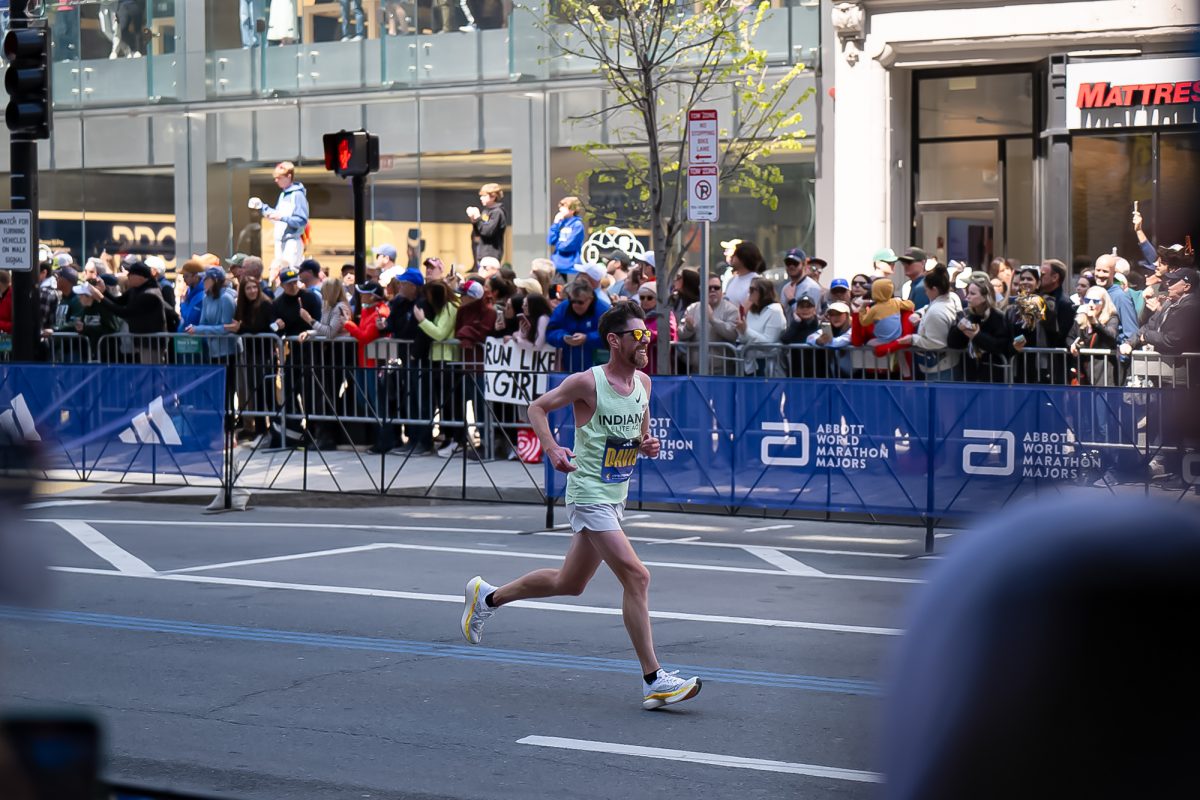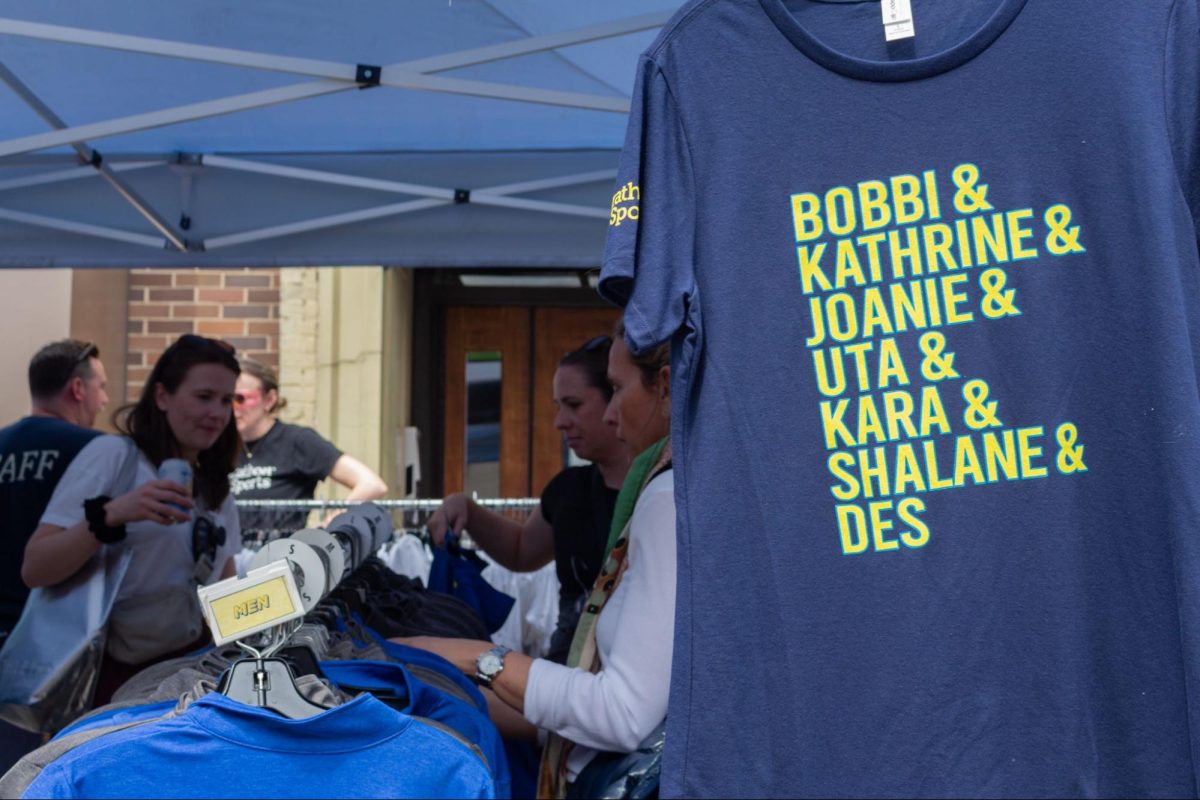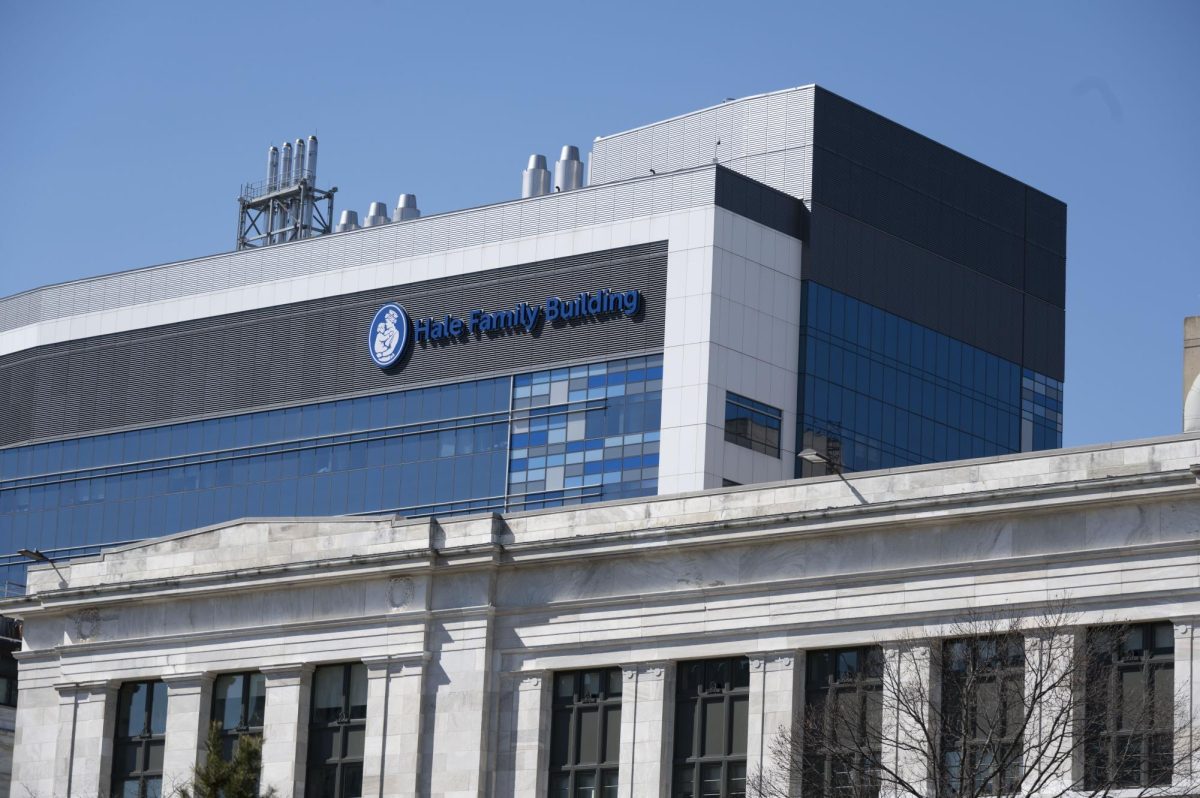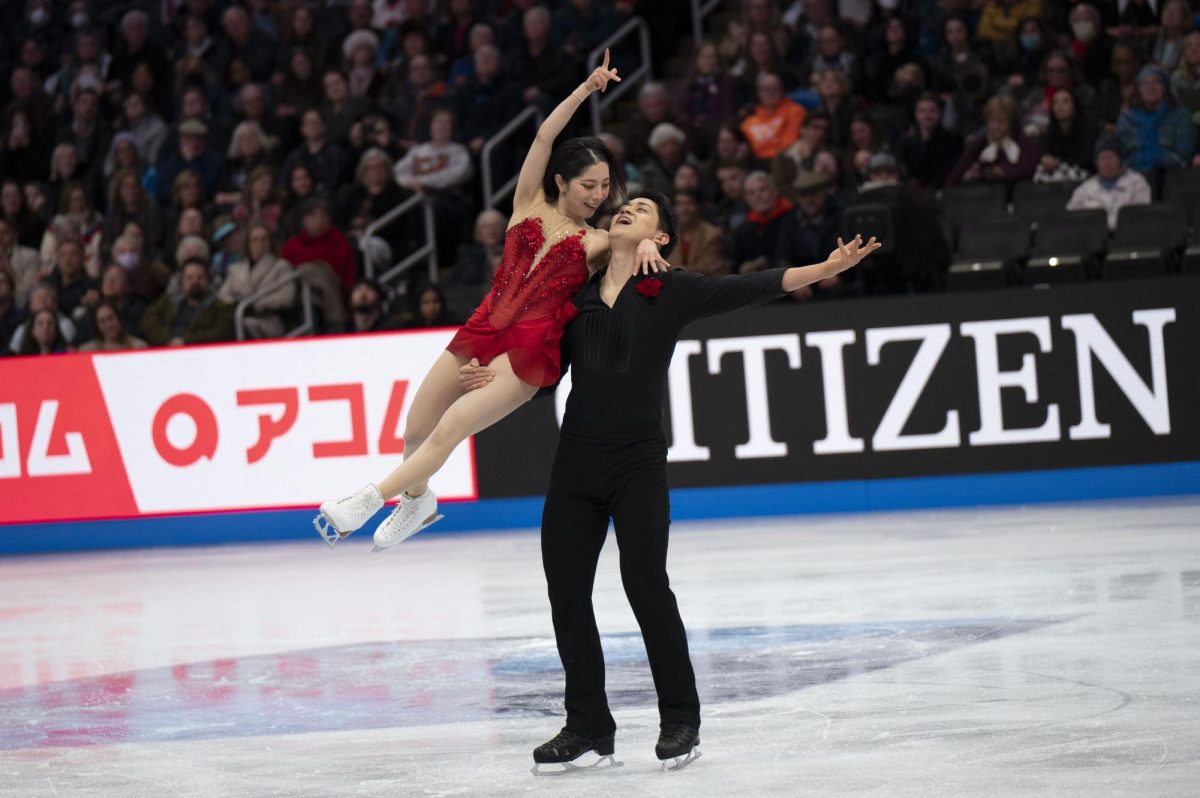By Elise Harmon, news correspondent
Nine pieces in a temporary art exhibition on the Back Bay Fens were destroyed in an act of vandalism the night of Sept. 26. A series of eight panels by sculptor Peter Kronberg, as well as a metal structure by Milan Klic, were found smashed, which will lead to the exhibit’s premature closing.
“My job was to check the exhibit out on Saturday,” Kronberg, who discovered the destruction of his artwork, said. “I was at a play and noticed it on the walk home that night.”
CrossRoads, a sculpture series featuring 16 artists and 14 installations, curated by Susan Israel, is a project initiated by Energy Necklace Project, an environmental advocacy organization. Each installation reflects on climate change and sustainability in keeping with the organization’s mission to raise awareness through public art exhibitions and other programs.
Originally, the exhibition was meant to run through Dec. 7. However, on Sept. 30, the Energy Necklace Project announced that as long as the vandalism continues, the exhibition will end sometime after an Oct. 13 event at which artists will display their work.
Since the theft of an art piece within the first two days of its installation, artists have been taking turns patrolling the exhibition.
Kronberg, an attorney who teaches business law at Tufts University, reported the incident to the Boston Police Department, and the fourth precinct investigated. The department could not be reached for a statement, but according to a Sept. 30 press release, the vandalism is believed to be the work of students.
Kronberg’s contribution to the exhibit was “Haughty Eyes and Lying Tongue,” a series of eight panels representing the first two sources of leprosy according to the Jewish Talmud. The durable panels were made of high-strength plaster and reinforced with burlap and steel pipes, making them extremely hard to move or break. The destroyed panels revealed footprints and marks indicating the vandal used some sort of tool to smash the plaster.
“I like people to respond to my work, but not necessarily by destroying it,” Kronberg said. “It’s interesting that someone felt so strongly that they exerted so much effort.”
Also destroyed the night of Sept. 26 was a more fragile piece by Milan Klic, “Loop of Escapism,” which was significantly bent and battered. But Klic managed to make light of the situation. I’m crushed, just like my sculpture, he told Kronberg.
But the vandalism wasn’t just limited to one night. Cubes hanging from a tree are continually stolen from Coni Porter’s commentary on carbon dioxide emissions, “CO2 Cubed,” and branches from Gail Bos’s “Tree Dreams” have been broken off. Five others have been similarly damaged.
Jeanie Knox, the director of external affairs for Emerald Necklace Conservancy, which oversees the Energy Necklace Project, was surprised by the vandalism: the Conservancy’s visitor center has only been tagged with graffiti twice in the last two years.
“I’d hate to say anyone expected it,” she said. “Because it hadn’t been done before in the area to my knowledge.”
The destruction raises the question over whether artwork can be displayed in public places without the expectation of vandalism. Lyn Falkner, viewing the exhibition with her artist husband, thought not.
“When you have temporary art in public places…it gets vandalized, and it gets stolen,” Falkner said. “It’s kind of sad.”
She thinks that public art should blend into the surroundings more, citing Andy Goldsworthy’s work as an example. Goldsworthy creates site-specific sculptures out of natural materials that are meant to mesh easily with their surroundings. For this kind of artwork, human destruction is an expected part of the process.
Even though students are suspected of causing the damage, Kevin Luo, a freshman computer science major, couldn’t believe that someone would take the time to willfully destroy art.
“I’m appalled that someone would desecrate art like that,” he said, adding that he walks through the Fens almost daily.
Kronberg, despite everything, is glad that he got the chance to display his artwork.
“What’s really great is that I’ve had the opportunity to have great conversations with people,” he said. “Especially with students.”
Photo by Elise Harmon


